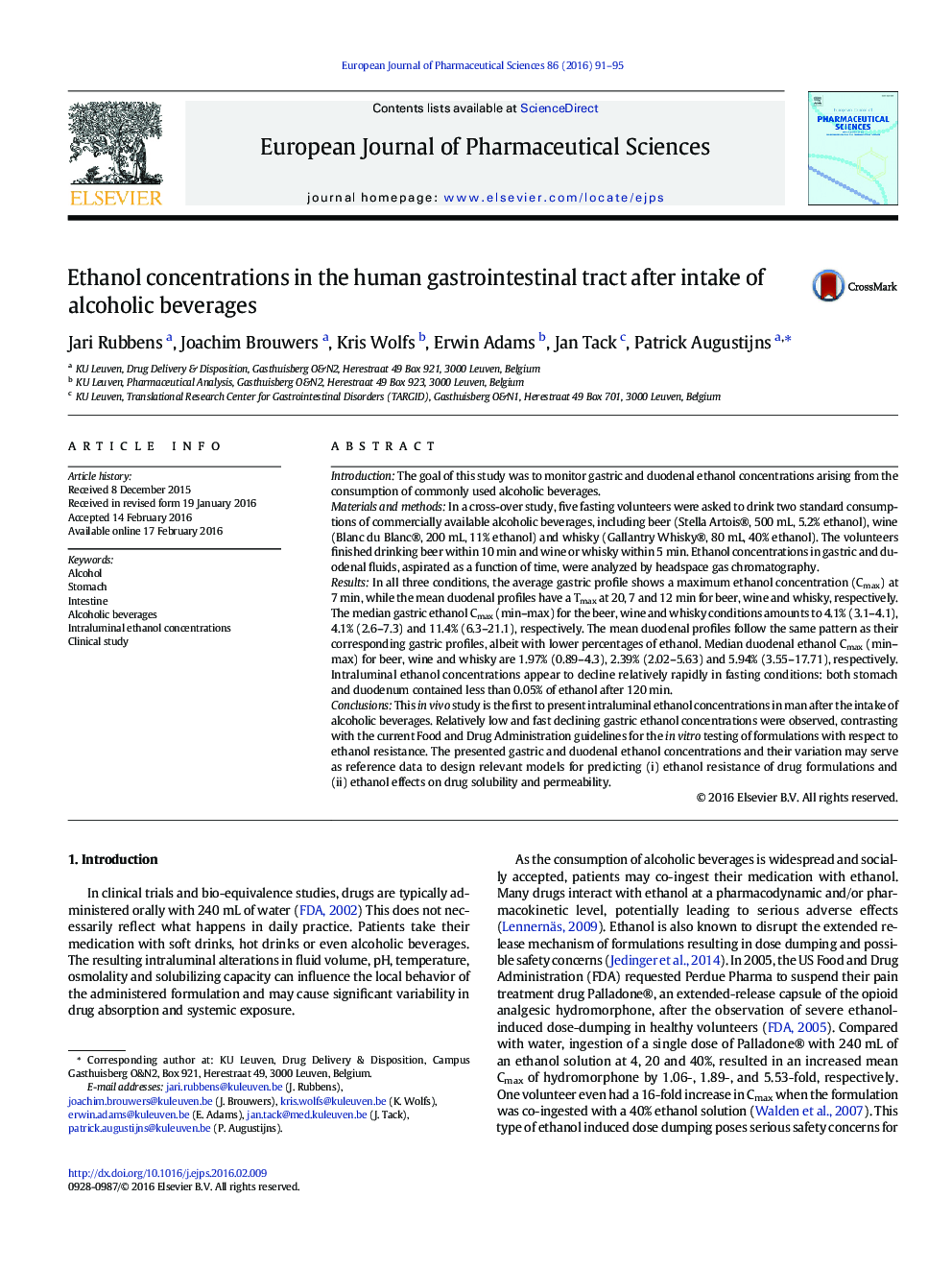| کد مقاله | کد نشریه | سال انتشار | مقاله انگلیسی | نسخه تمام متن |
|---|---|---|---|---|
| 2480068 | 1556164 | 2016 | 5 صفحه PDF | دانلود رایگان |
IntroductionThe goal of this study was to monitor gastric and duodenal ethanol concentrations arising from the consumption of commonly used alcoholic beverages.Materials and methodsIn a cross-over study, five fasting volunteers were asked to drink two standard consumptions of commercially available alcoholic beverages, including beer (Stella Artois®, 500 mL, 5.2% ethanol), wine (Blanc du Blanc®, 200 mL, 11% ethanol) and whisky (Gallantry Whisky®, 80 mL, 40% ethanol). The volunteers finished drinking beer within 10 min and wine or whisky within 5 min. Ethanol concentrations in gastric and duodenal fluids, aspirated as a function of time, were analyzed by headspace gas chromatography.ResultsIn all three conditions, the average gastric profile shows a maximum ethanol concentration (Cmax) at 7 min, while the mean duodenal profiles have a Tmax at 20, 7 and 12 min for beer, wine and whisky, respectively. The median gastric ethanol Cmax (min–max) for the beer, wine and whisky conditions amounts to 4.1% (3.1–4.1), 4.1% (2.6–7.3) and 11.4% (6.3–21.1), respectively. The mean duodenal profiles follow the same pattern as their corresponding gastric profiles, albeit with lower percentages of ethanol. Median duodenal ethanol Cmax (min–max) for beer, wine and whisky are 1.97% (0.89–4.3), 2.39% (2.02–5.63) and 5.94% (3.55–17.71), respectively. Intraluminal ethanol concentrations appear to decline relatively rapidly in fasting conditions: both stomach and duodenum contained less than 0.05% of ethanol after 120 min.ConclusionsThis in vivo study is the first to present intraluminal ethanol concentrations in man after the intake of alcoholic beverages. Relatively low and fast declining gastric ethanol concentrations were observed, contrasting with the current Food and Drug Administration guidelines for the in vitro testing of formulations with respect to ethanol resistance. The presented gastric and duodenal ethanol concentrations and their variation may serve as reference data to design relevant models for predicting (i) ethanol resistance of drug formulations and (ii) ethanol effects on drug solubility and permeability.
Figure optionsDownload high-quality image (73 K)Download as PowerPoint slide
Journal: European Journal of Pharmaceutical Sciences - Volume 86, 30 April 2016, Pages 91–95
